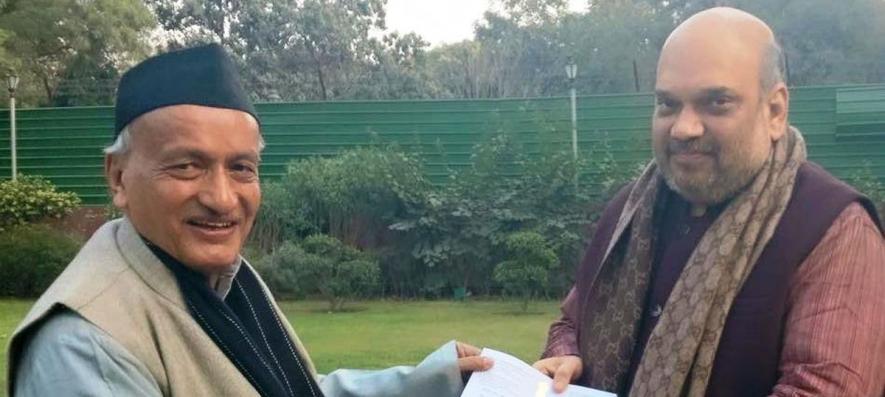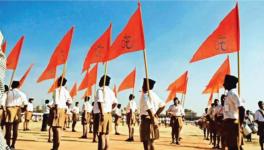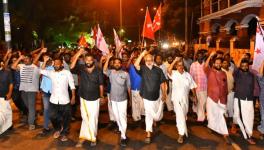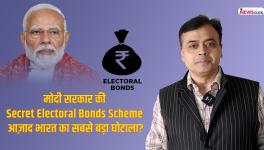‘Discretionary Powers’ and Political Background of Governors

Representational Image
Out of the total present 28 governors of states in India, 11 have been members of the Rashtriya Swayamsevak Sangh – the ideological parental organisation of the ruling Bharatiya Janata Party, while seven of them have been seen taking part in various gatherings of the Sangh Parivar. This, however, is not the first time that persons affiliated to the Sangh are being appointed to offices of power. During the first term of the saffron party, the number of governors affiliated to the RSS was 17 out of 29.
With the prime minister, Narendra Modi, himself being a pracharak (member of RSS), these appointments do not come as a surprise. What is worth deliberating are the reasons for these appointments.
Also Read: Modi's Bharat and "Development" of Hindutva
The governor, who is the nominal head of the state, has to give her/his consent to the various executive actions and also has the power to appoint the Chief Ministers, Council of Ministers, Advocate General and the members of the State Public Service Commission. She/he is also consulted by the president in the appointment of the judges of the state high courts. Thus, the governors hold power required to shape the legislative functioning of the state.
With the powers that the governor possesses, especially the power to decide who to invite to form the government, it becomes quite clear why the Narendra Modi-led BJP government and the RSS may want to appoint their confidant in such crucial positions. According to the Sarkaria Commission recommendations on the appointment of Governors and Lieutenant Governors, many of the current governors are not eligible to be governors at the first place. The recommendations clearly states, “The Governor should be eminent in some walk of life and from outside the state. He should be a detached figure without intense political links or should not have taken part in politics in recent past. Besides, he should not be a member of the ruling party.”
Also Read: Puppet-master RSS is Taking on a More Open Role in the Indian Democracy
Another reason could be that the BJP, in order to fulfill its ambition to form its government in all the states, wishes to have a governor who would open up avenues if faced with a hurdle. There also exists a loophole in the Constitution, as an advocate in Madras High Court, Rahul Unnikrishnan observes, that the Sangh and the BJP is making use of. Unnikrishnan wrote in Livemint, “Our Constitution is eerily silent on the manner of appointment of chief ministers by the governor when there is no clear majority by any of the contesting political parties. Equally overwhelming is its silence on the conduct of floor tests in assembly/Parliament. These deafening silences give the governors unyielding powers…” For example, the appointments of the CMs in Goa and Manipur points at this loophole and the benefits that the BJP earned out of this loophole. The governors in these states, Mridula Sinha and Dr. Najma A Heptulla invited the BJP which was the second largest party to form the government. These appointments as Unnikrishnan rightly observes, opened “ a floodgate of constitutional issues.” Similar political episodes could be seen unfurling in the state of Karnataka, while the latest was the phenomenal usage of powers rested in the hands of the governor in the state of Maharashtra.
Also Read: 2014 to 2019: Impunity of Hindutva Organisations
It has to be noted here that, even if the Constitution is silent as Unnikrishnan rightly writes, through several of its judgments, the Supreme Court of India has specified the powers resting with the governor.
For example, as a report in The Hindu notes, Article 163(2) of the Constitution is generally quoted to argue that the governors are given “general discretionary power”; “but the five-judge Constitution bench of the Supreme Court led by the then Chief Justice J S Khehar in the Nabam Rebia judgment of 2016 ruled that article 163 does not give governors “general discretionary power” as is often misunderstood.” The judgment said, “The area for the exercise of his (governor) discretion is limited. Even this limited area, his choice of action should not be arbitrary or fanciful. It must be a choice dictated by reason, actuated by good faith and tempered by caution.” However, as seen in the case of Goa, Manipur and as will be discussed below in Maharashtra and Karnataka, the current governors seem to have assumed “general discretionary power.”
In the Assembly elections in Maharashtra, the BJP had won 105 seats out of total 288, its ally Shiv Sena had bagged 56 seats, National Congress Party (NCP) had bagged 54 seats and the Congress bagged 44 seats. As Shiv Sena pulled out its support to the BJP, it turned out that none of the contested political parties had the required numbers to form a government.
Also Read: There Can be No ‘’Mirror of Truth’’ For the RSS
Following the protocol, Governor Shri Bhagat Singh Koshyari first invited the BJP – the largest party to form the government, but the party failed to get the required support to form the government. After this, Shiv Sena was invited to form the government. Sena approached the governor requesting for more time to form the government. The governor refused to give any more time and invited NCP and gave twenty four hours to form a government. However, even before the expiry of the given time, the governor approached the president for imposition of President's rule. What is to be noted here is that the time accorded to each party, Sena or NCP to form the government was much lesser than what was given to BJP. Koshyari- an RSS veteran knew what he was doing, or rather he knew what was expected of him.
Also Watch: The RSS Project: Distorting History, Saffronising Society
Governor of Karnataka, Vajubhai Vala—again an ardent RSS follower—was seen breaching the protocols during the formation of the Karnataka government in 2018. In the state Assembly elections held in 2018, none of the political parties got a full mandate and BJP emerged as the single largest party with 105 MLAs, while Congress got 78 seats, Janata Dal (Secular) [JD(S)] 37 seats and one seat each was bagged by Bahujan Samaj Party (BSP) and Karnataka Pragnyavantha Janata Party (KPJP). However, Congress and JD(S) came together in a post poll alliance to form the government. But throwing the protocol to the winds, the governor invited BJP to form the government. This was flouting of the Bommai judgment of the Supreme Court, which clearly states the party or an alliance of parties with the majority should be invited by the governor to form the government.
The eventual collapse of the Congress-JD(S) coalition government and the saga of horse trading and corruption of the BJP is another story altogether.
Also Read: ‘Future of Bharat’: How RSS is Masking its Real Face
As Walter K Andersen and Shridhar D. Damle write in their recent book, The RSS: A View to the Inside, no one can claim any longer that the RSS is “not a political organisation”. They write, there “is a rapid growth of affiliated groups of the RSS, penetrating almost all areas of society…” even though the authors conclude that this penetration has “prompted them to take interest in government”, it should be noted that the RSS has always been directly involved in politics, and as discussed in detail above, under the Modi-led BJP government everything is in the open.
Get the latest reports & analysis with people's perspective on Protests, movements & deep analytical videos, discussions of the current affairs in your Telegram app. Subscribe to NewsClick's Telegram channel & get Real-Time updates on stories, as they get published on our website.
























